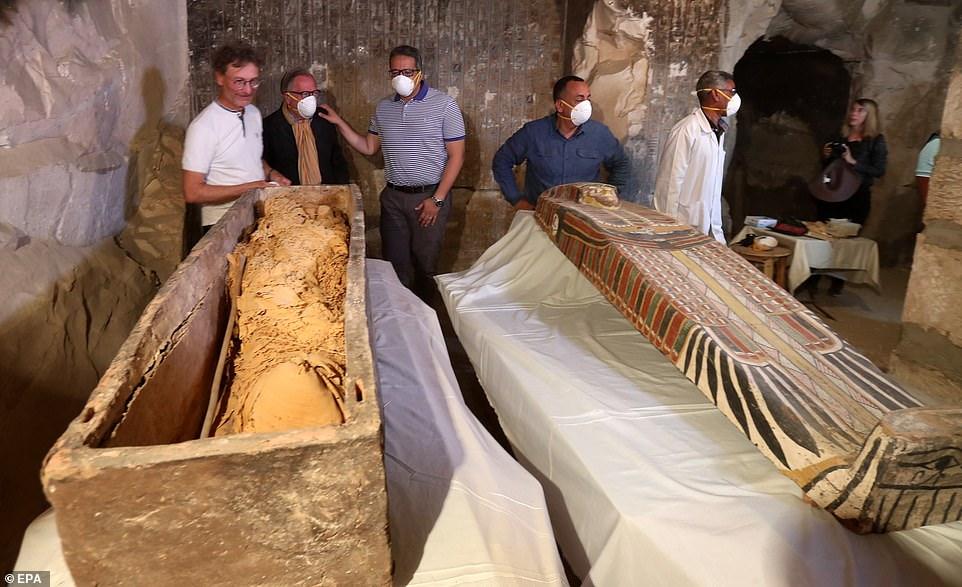The mummy of a 3,000-year-old woman has been found almost perfectly preserved in a coffin in Egypt.
The sarcophagus was one of two found in an ancient tomb in El-Asasif, Luxor, on the bank of the River Nile near the Valley of the Kings.
The first one had been opened earlier and examined by Egyptian antiquities officials and contained a priest who oversaw the embalming of high-ranking officials.
“One sarcophagus was Rishi-style, which dates back to the 17th Dynasty, while the other sarcophagus was from the 18th Dynasty,” Minister of Antiquities Khaled Al Anani said. “The two tombs were present with their mummies inside.”
The Eighteenth Dynasty dates back to the 13th century BC, a period noted for some of the most well-known Pharaohs, including Tutankhamun and Ramses II.
It was the first known time that authorities had opened a previously unopened sarcophagus before international media.
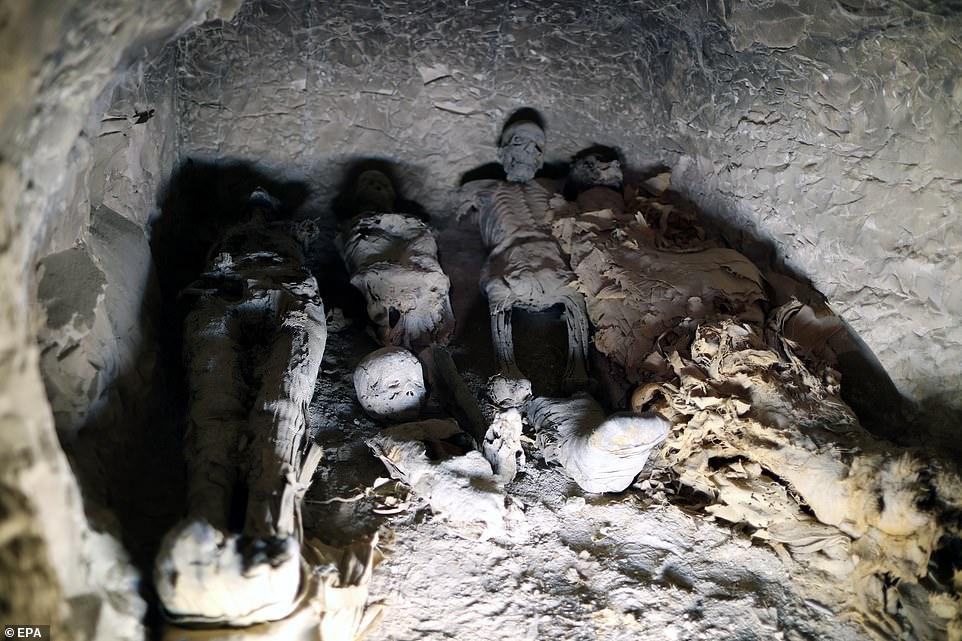
Skeletons were found in the ancient tomb in El-Asasif, Luxor, on the bank of the River Nile near the Valley of the Kings.
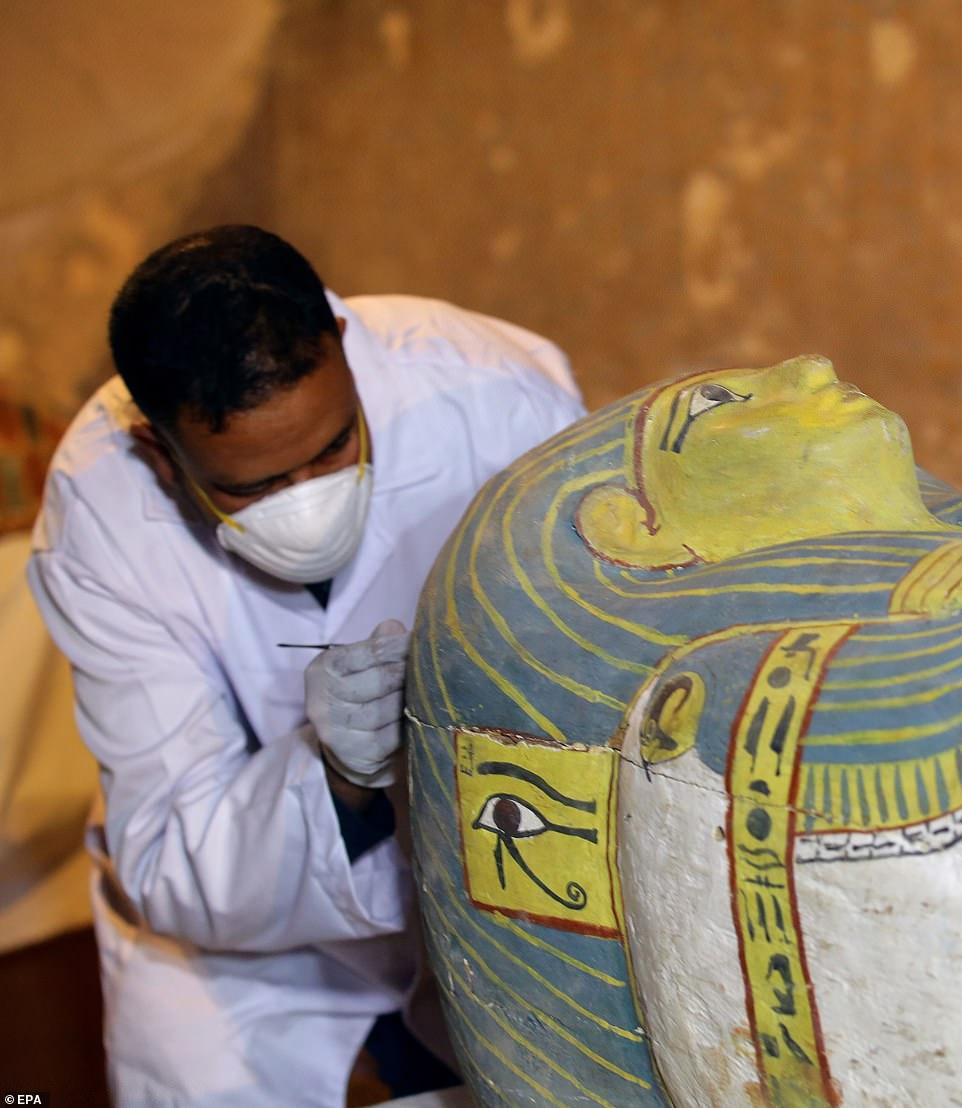
Egyptian archaeologists uncovered the core of an intact sarcophagus inside Tomb TT33 in Luxor, containing the ‘perfectly intact’ remains of a 3,000-year-old woman.
Earlier in the day, authorities also revealed in the same area the tomb of the overseer of the embalming shrine identified as Thaw-Irkhet-if, whose tomb contained five colored masks and some 1,000 Ushabti statues – the miniature figurines of servants to serve the dead in the afterlife.
Three-hundred-year-old meters of rubble were removed over months to uncover the tomb, which included colored ceiling paintings depicting scenes from the owner and his family’s life.
The tomb, which also contains mummies, skeletons, and skulls, dates back to the Middle Kingdom, almost 4,000 years ago but was reused during the late period.
Ancient Egyptians mummified humans to preserve their bodies for the afterlife, while animal mummies were used as religious offerings.
Egypt has revealed over a dozen ancient discoveries since the beginning of this year.
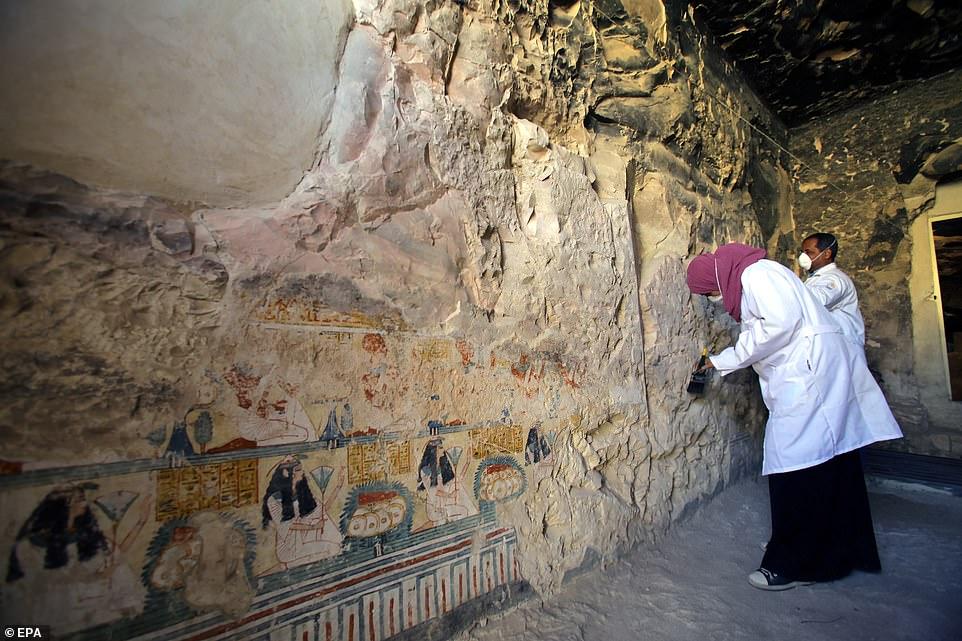
Egyptian archaeologists are working on restoring a wall with painted murals inside the newly discovered tomb at Al-Assasif Necropolis.
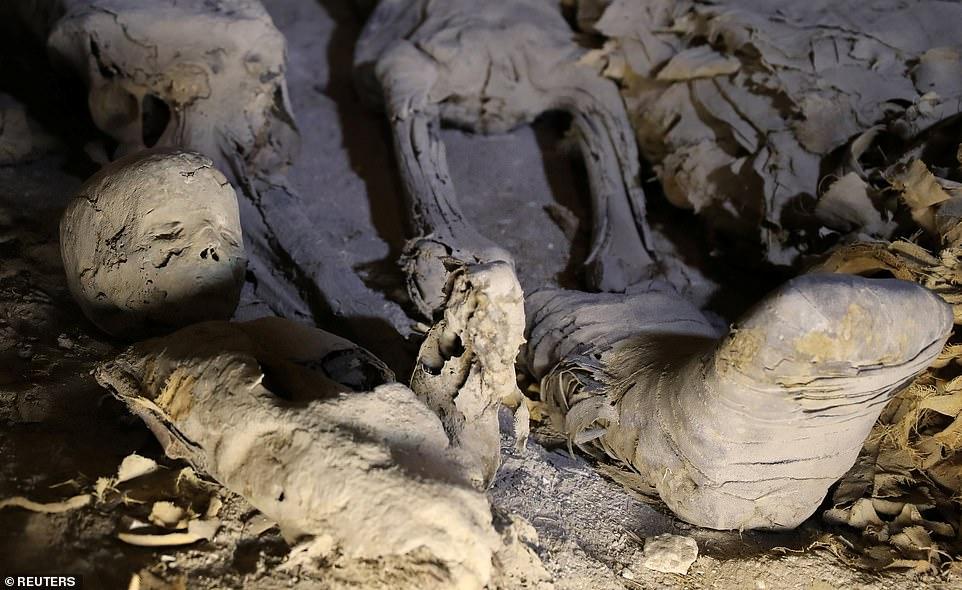
A child’s mummy lies inside the newly discovered burial burial at Al-Assasif Necropolis in Luxor, Egypt, as of November 24, 2018.
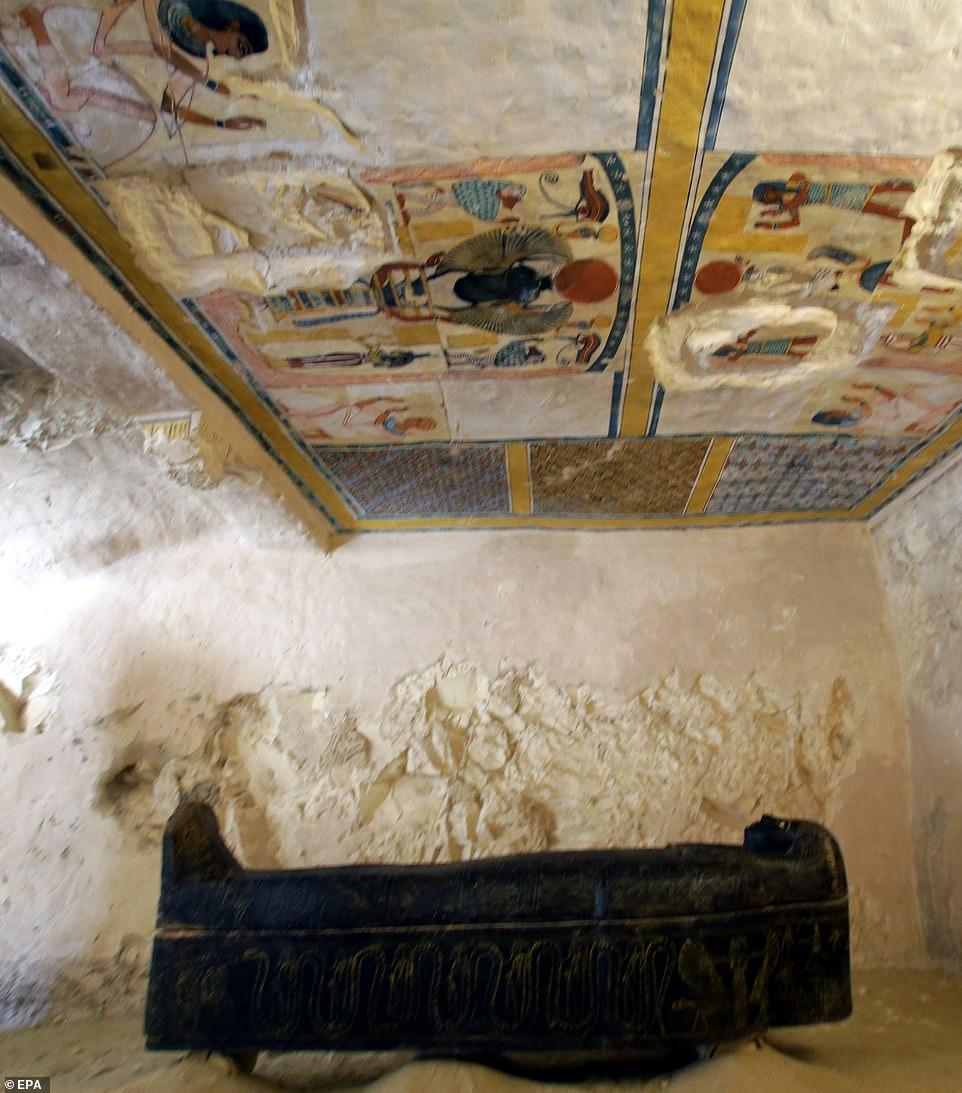
Egypt’s Minister of Antiquities, Khaled el-Enany (center), and Mostafa Waziri (right), the Secretary-General of the Supreme Council of Antiquities, inspect an intact sarcophagus during its opening at Al-Assasif Necropolis.
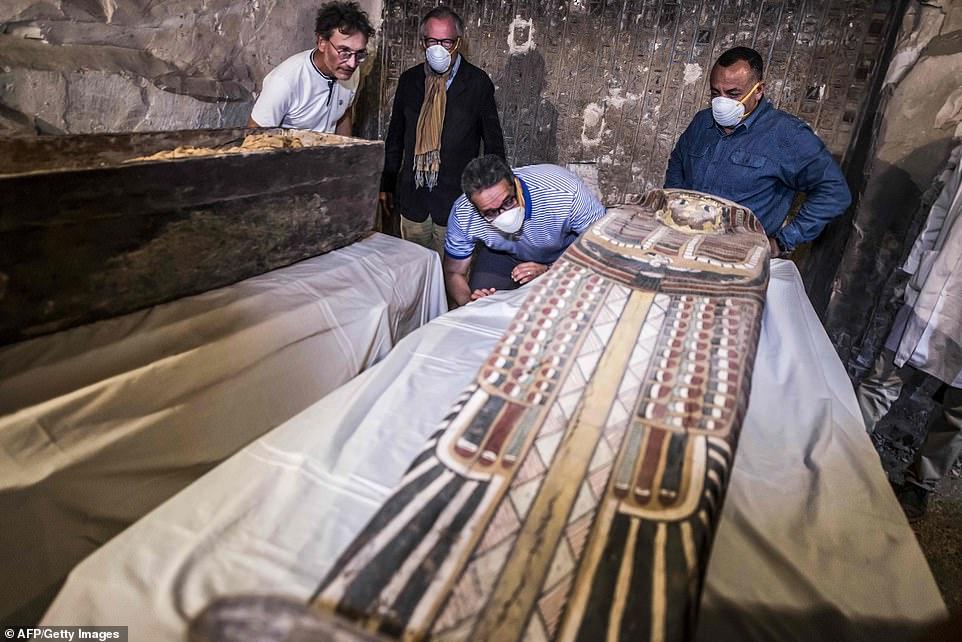
A skull is seen inside the newly discovered burial tomb at Al-Assasif Necropolis in Luxor, Egypt, on November 24, 2018.
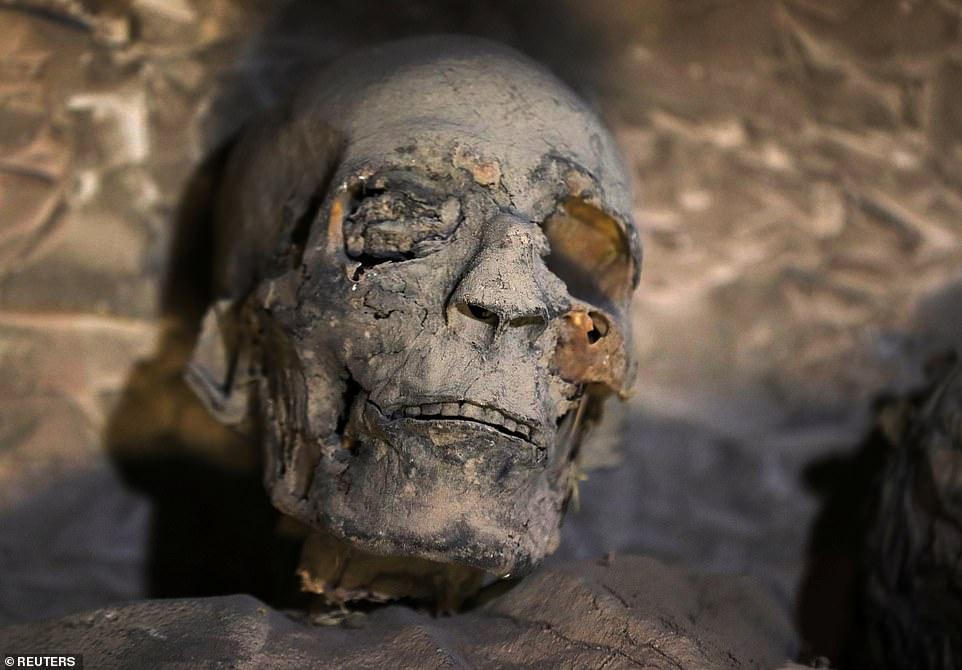
An Egyptian archaeologist brushes the top of a carved black wooden sarcophagus inlaid with gilded sheets on November 24, 2018.
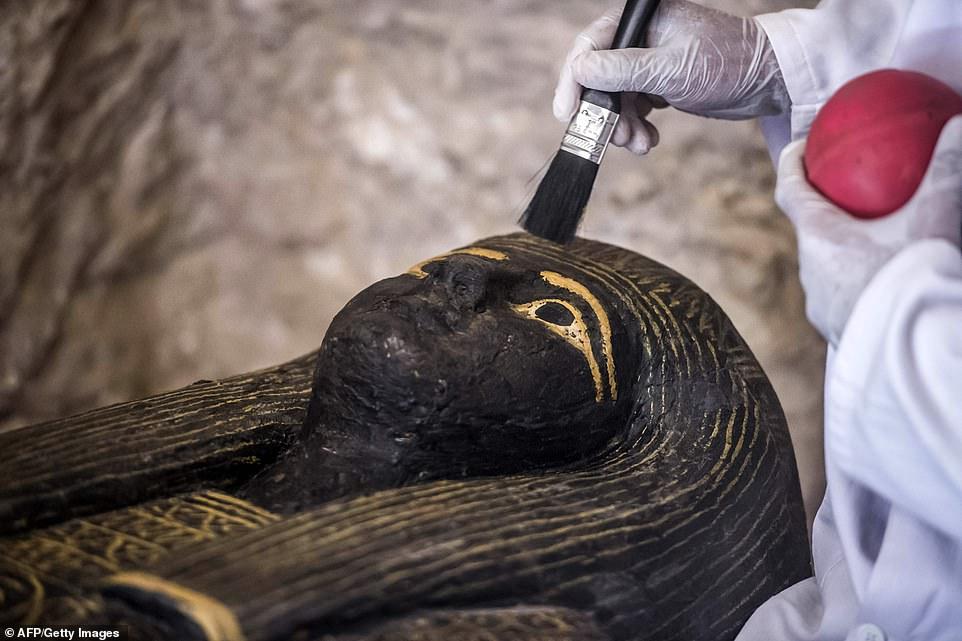
An Egyptian archaeologist works on restoring sarcophagi inside a tomb at Al-Assasif Necropolis in Luxor, located 700 kilometers south of Cairo.
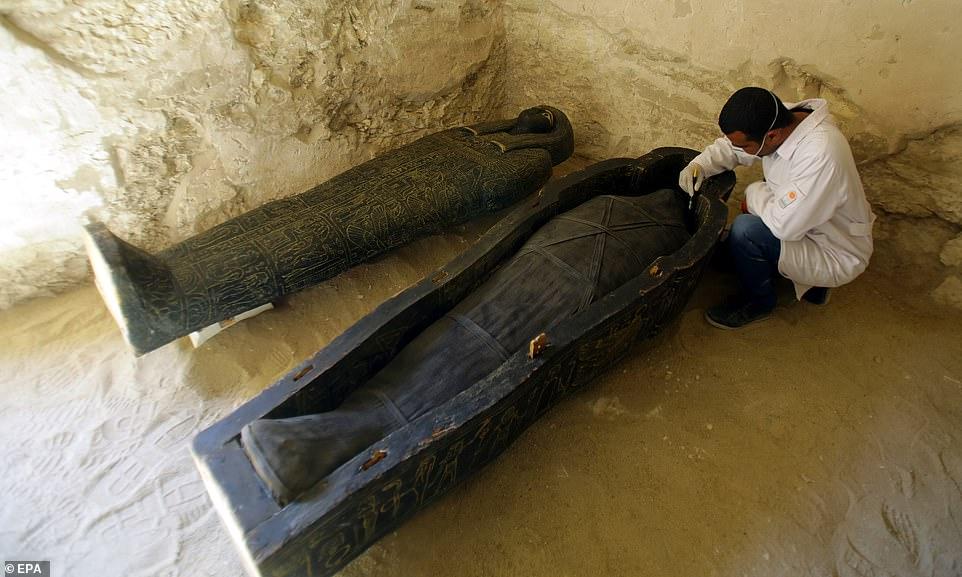
Egypt’s Minister of Antiquities, Khaled el-Enany (center), and Mostafa Waziri (right), the Secretary-General of the Supreme Council of Antiquities, inspect intact sarcophagi.
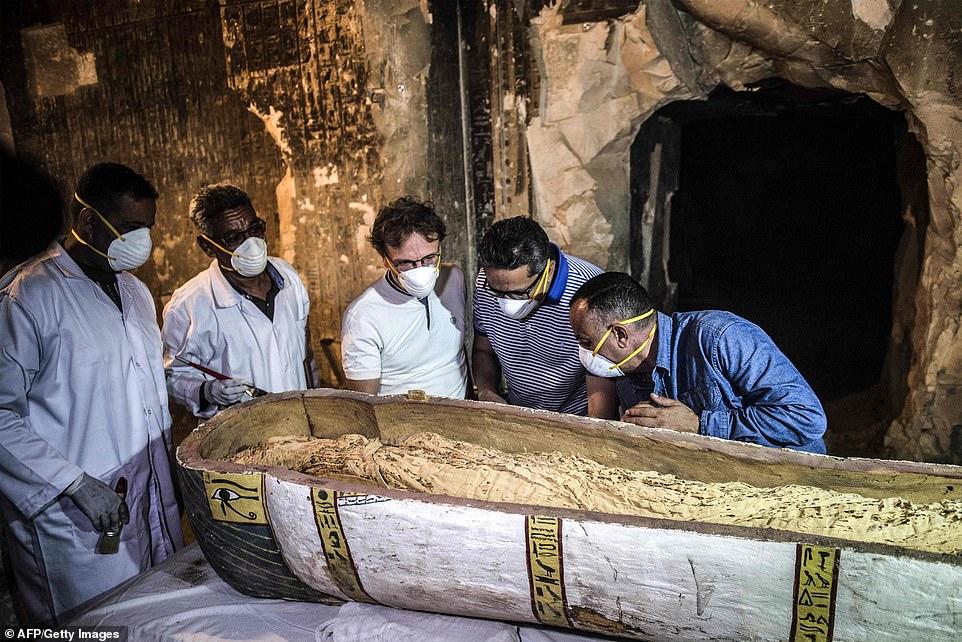
The tomb at Al-Assasif Necropolis on the west bank of the Nile, north of the southern Egyptian city of Luxor, was discovered earlier this month by a French mission.
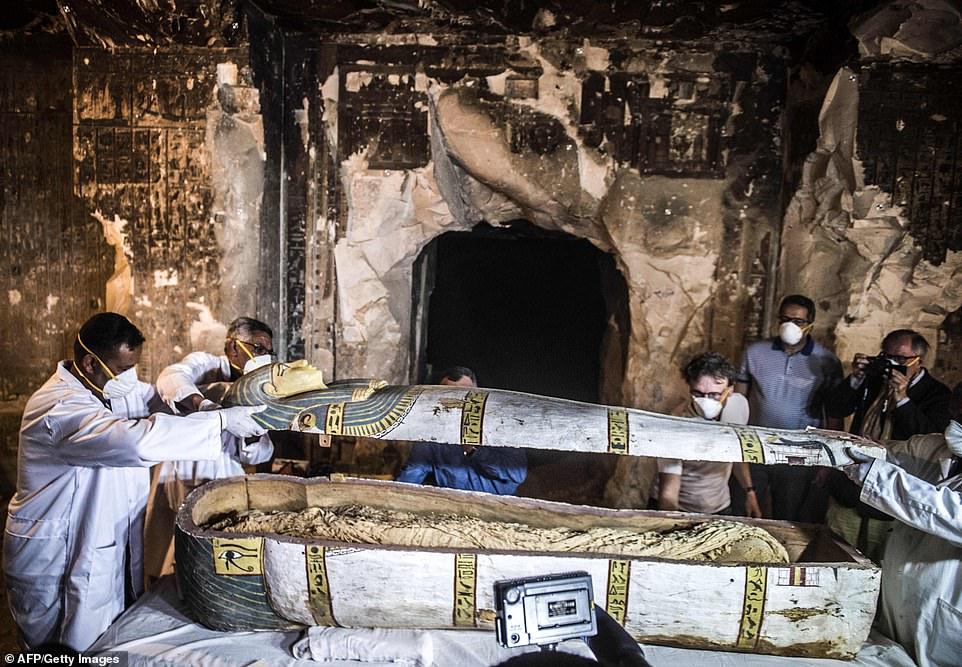
Egyptian archaeologists work on restoring pottery, including plates and vases, outside the newly discovered tomb at Al-Assasif Necropolis.
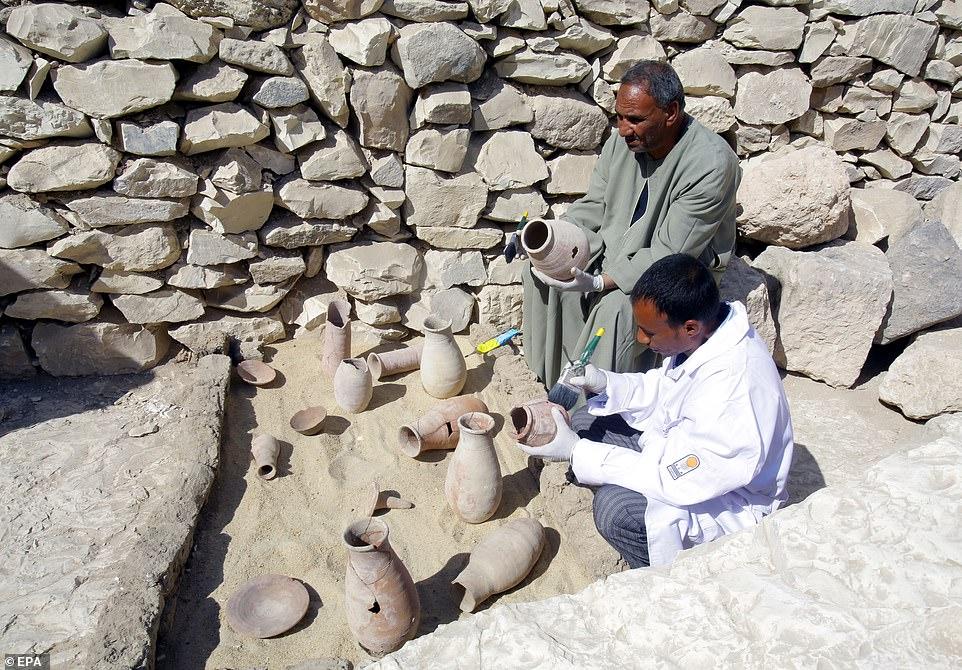
Egypt’s Minister of Antiquities, Khaled El-Enany, announced that the Egyptian archaeological mission uncovered a Ramesside tomb of Thaw-Rakht-Iuf, overseer of the mummification shrine at Mut Temple.
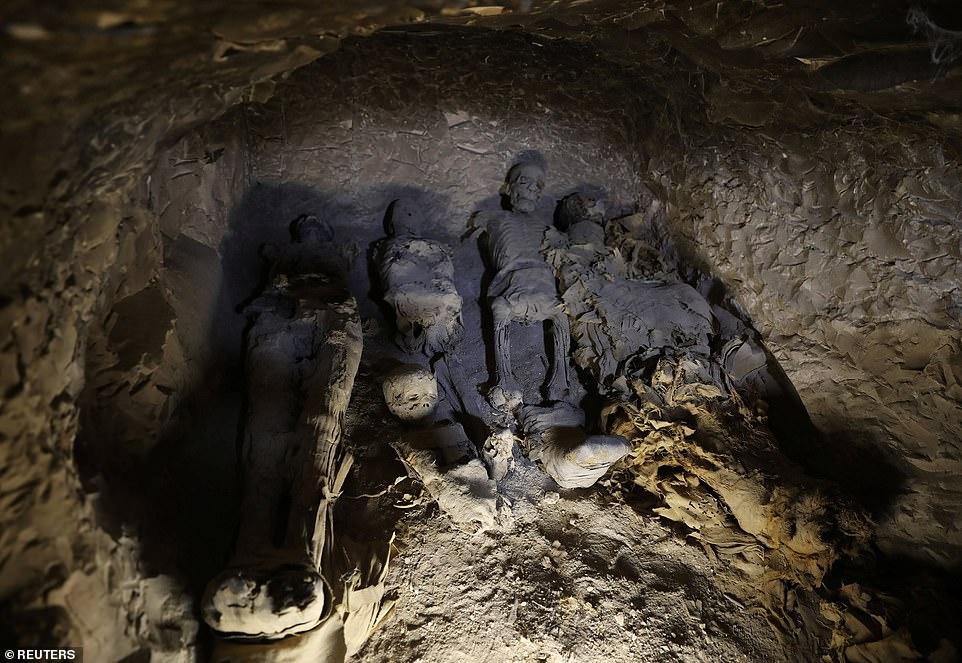
Mustafa Waziri, Secretary-General of the Supreme Council of Antiquities, speaks inside the tomb, which he said was discovered at a depth of around 300 meters of debris.
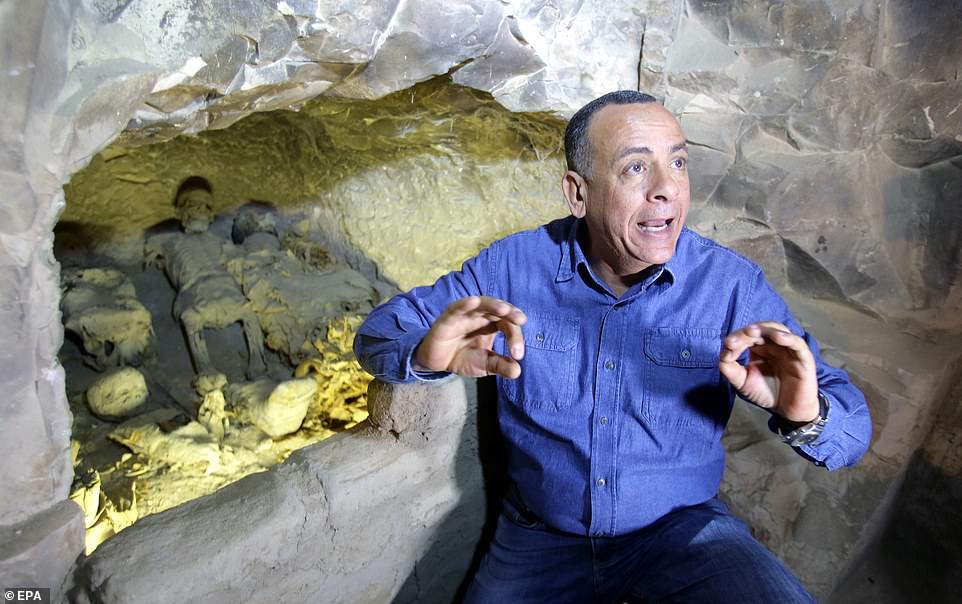
An upper view of hieroglyphics carved on a black wooden sarcophagus, intertwined with gilded sheets, was discovered by an Egyptian archaeological mission at Al-Asasif Necropolis on the west bank of the Nile.
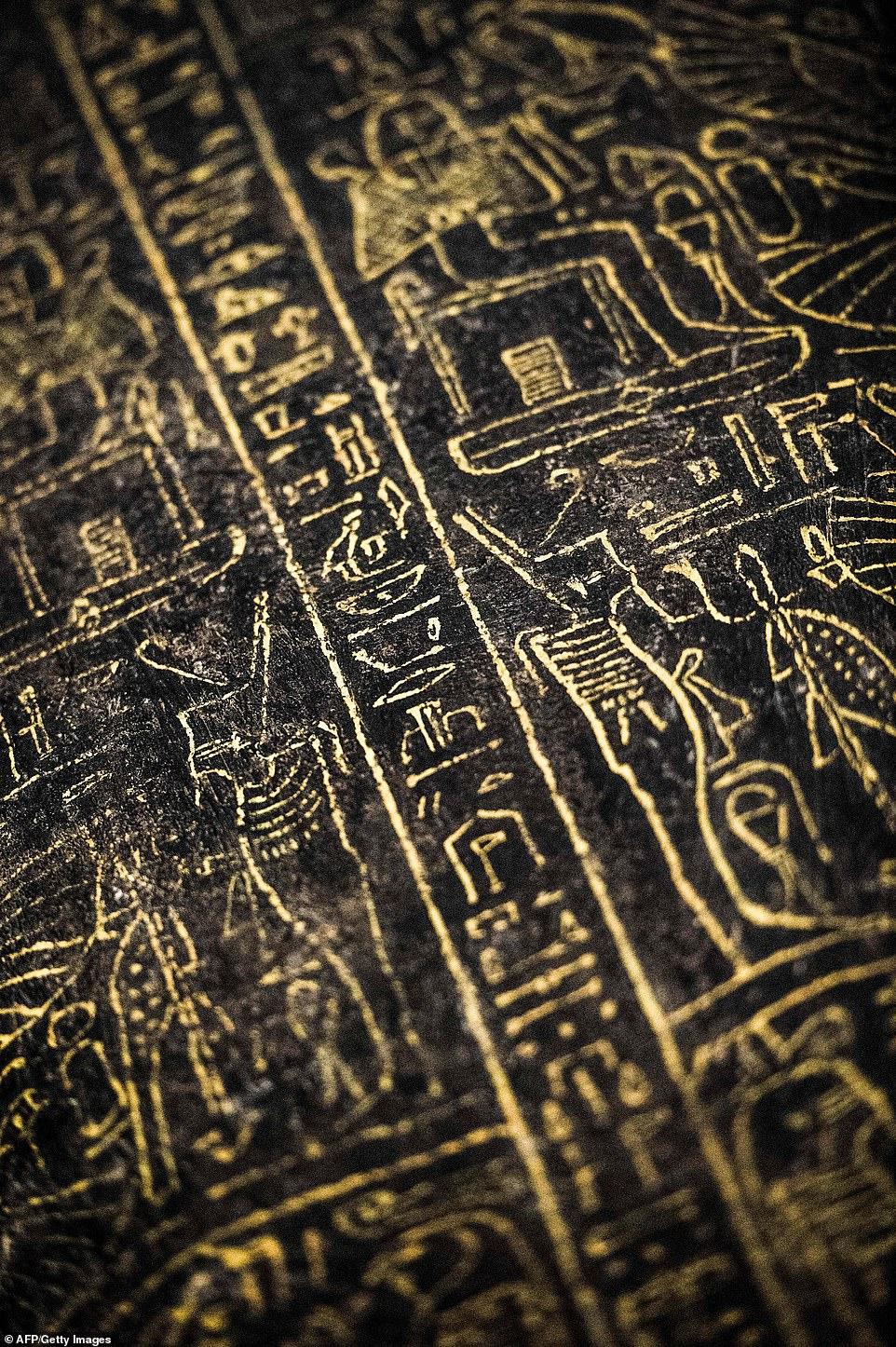
An archaeologist removes the cover of an intact sarcophagus inside the tomb TT33 in Luxor, Egypt.
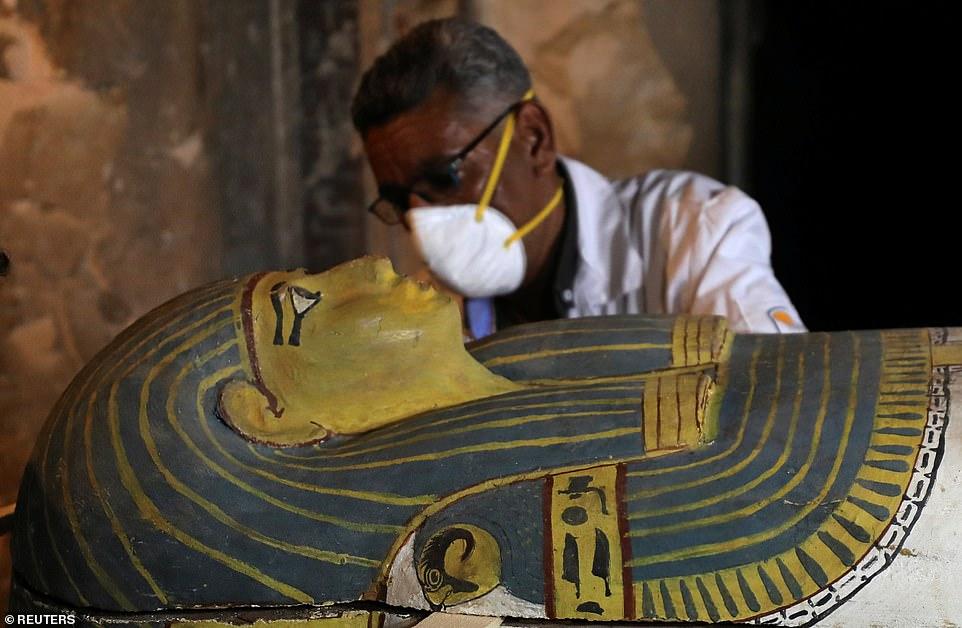
Archaeologists removed the cover of an intact sarcophagus inside the tomb TT33. El-Enany described the newly discovered intact sarcophagus inside the tomb as magnificent. It is carved in wood with eyes inlaid with golden sheets.
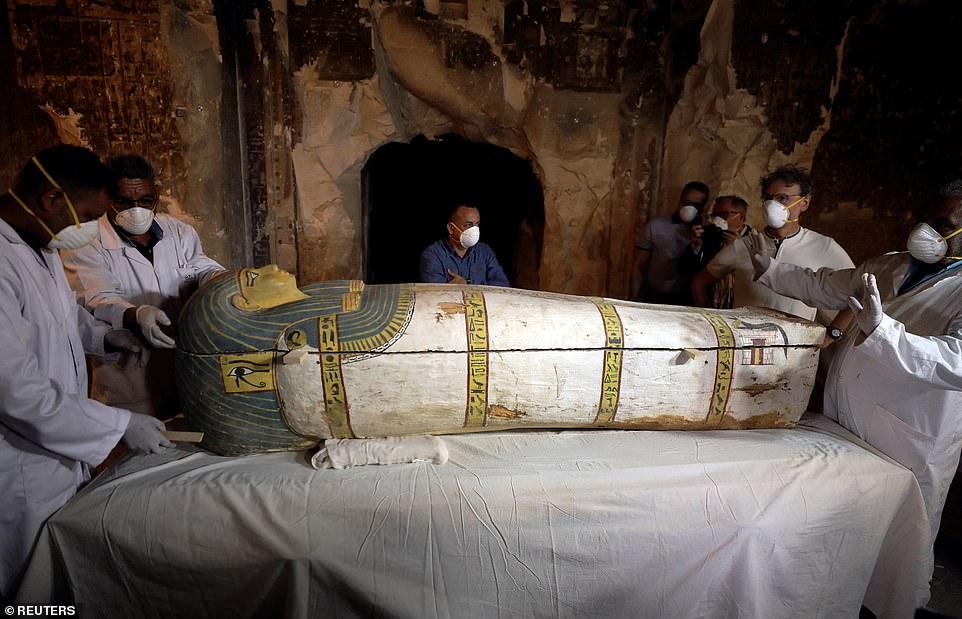
French Professor Frédéric Colin, head of the French mission in Tomb TT33 where the sarcophagus was found, said that the sarcophagus dates back to the 18th dynasty, and inside it, a well-preserved mummy was discovered wrapped in linen.
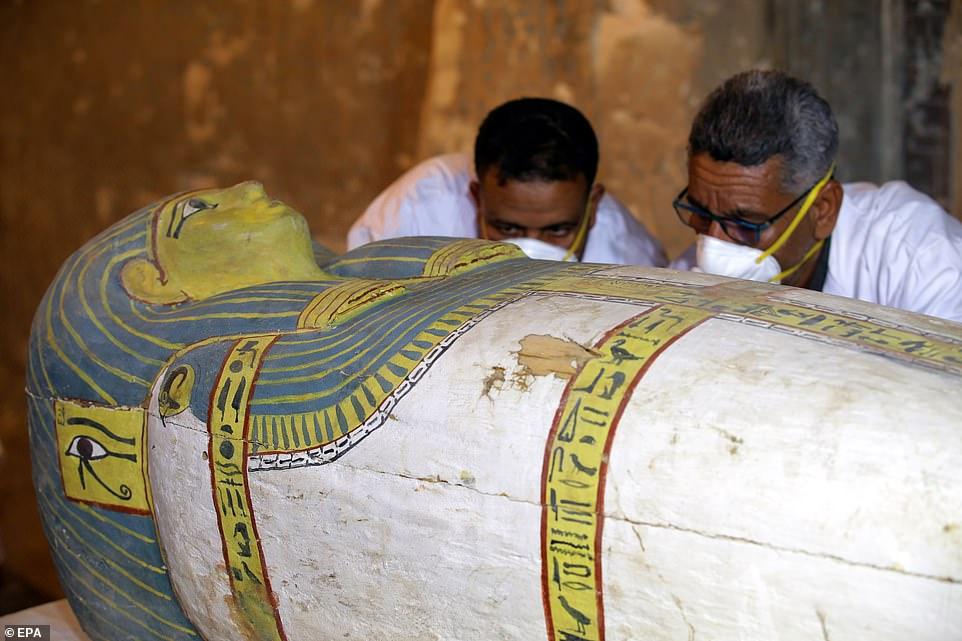
Egyptian Minister of Antiquities, Khaleed El-Enany (center), French Professor Frédéric Colin (left), head of the French mission, and Mostafa Waziri, Secretary-General of the Supreme Council of Antiquities (right), attended the unveiling of the cover of an intact sarcophagus inside Tomb TT33 in Luxor.
